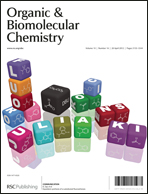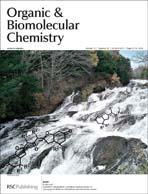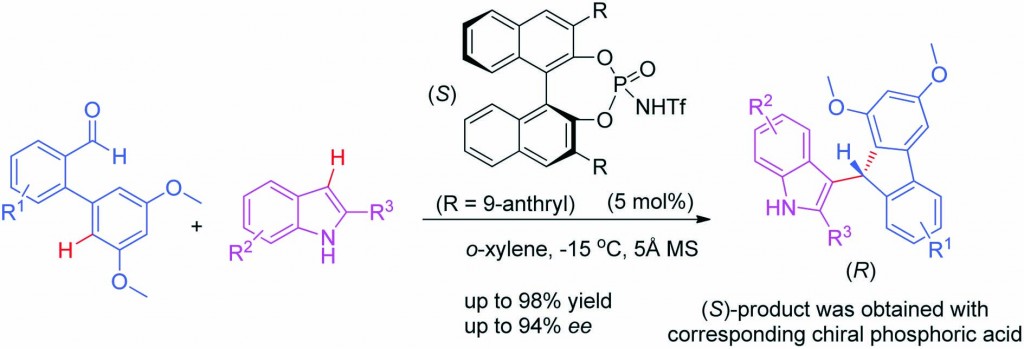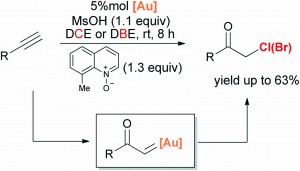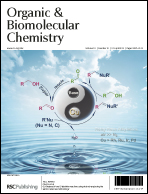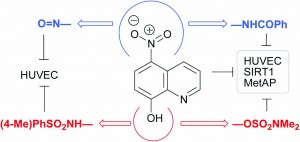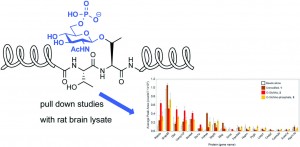 In our continued countdown to Organic & Biomolecular Chemistry‘s 10th anniversary issue we have had a look back at some of the art work that has appeared on our covers through the years. Below are the front covers of issue 1 and the work that featured on them for each year since the inception of OBC. What’s your favourite?
In our continued countdown to Organic & Biomolecular Chemistry‘s 10th anniversary issue we have had a look back at some of the art work that has appeared on our covers through the years. Below are the front covers of issue 1 and the work that featured on them for each year since the inception of OBC. What’s your favourite?
These stylish old school covers (right) were originally seen in 2003 & 2004 on volumes 1 & 2 respectively.
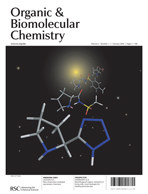 Volume 3:
Volume 3:
Free: New chiral anion mediated asymmetric chemistry
Jérôme Lacour and Richard Frantz
Org. Biomol. Chem., 2005, 3, 15–19
DOI: 10.1039/B413554G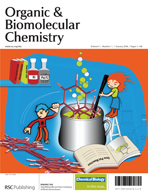
Volume 4:
Free: Artificial ribonucleases
Teija Niittymäki and Harri Lönnberg
Org. Biomol. Chem., 2006, 4, 15–25
DOI: 10.1039/B509022A
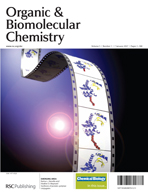
Volume 5:
Free: Synthesis of protein–polymer conjugates
Karina L. Heredia and Heather D. Maynard
Org. Biomol. Chem., 2007, 5, 45–53
DOI: 10.1039/B612355D
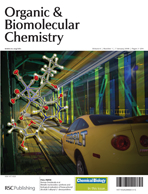 Volume 6:
Volume 6:
Free: Metallo-nucleosides: synthesis and biological evaluation of hexacarbonyl dicobalt 5-alkynyl-2′-deoxyuridines
Craig D. Sergeant et al.
Org. Biomol. Chem., 2008, 6, 73–80
DOI: 10.1039/B713371E
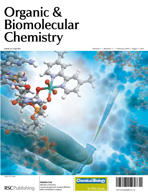 Volume 7:
Volume 7:
Free: Chemical approach toward efficient DNA methylation analysis
Akimitsu Okamoto
Org. Biomol. Chem., 2009, 7, 21–26
DOI: 10.1039/B813595A
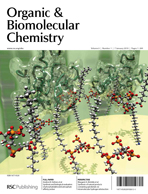 Volume 8:
Volume 8:
Free: Synthesis and biological evaluation of phosphatidylinositol phosphate affinity probes
Stuart J. Conway et al.
Org. Biomol. Chem., 2010, 8, 66–76
DOI: 10.1039/B913399B
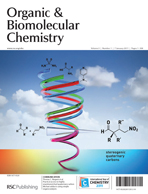 Volume 9:
Volume 9:
Free: Practical access to highly enantioenriched quaternary carbon Michael adducts using simple organocatalysts
Thomas C. Nugent, Mohammad Shoaib and Amna Shoaib
Org. Biomol. Chem., 2011, 9, 52–56
DOI: 10.1039/C0OB00822B
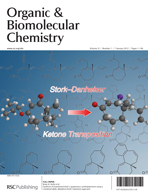 Volume 10:
Volume 10:
Free: Synthesis of enantioenriched γ-quaternary cycloheptenones using a combined allylic alkylation/Stork–Danheiser approach: preparation of mono-, bi-, and tricyclic systems
Nathan B. Bennett et al.
Org. Biomol. Chem., 2012, 10, 56–59
DOI: 10.1039/C1OB06189E
All of these articles are FREE to access so if you missed them the first time round why not have a read now. In fact, why not have a look at the whole of the issue? All the content from each issue 1 is now FREE to access so dive in and enjoy:
Volume: 1 2 3 4 5 6 7 8 9 10
- Do you have a favourite cover from our 10 years? Why not share it with us by leaving a comment below.
- Interested in having your work featured on a cover? Submit your work to us and show us your artwork.
- Missed our other 10th anniversary posts? Take a look here for some of our top cited work.
|
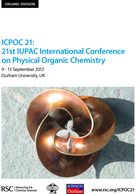 The Scientific Committee is currently reviewing all submissions, and has agreed to accept contributions up to Friday 13 April to allow for the Easter holiday break.
The Scientific Committee is currently reviewing all submissions, and has agreed to accept contributions up to Friday 13 April to allow for the Easter holiday break.



















